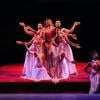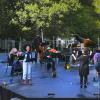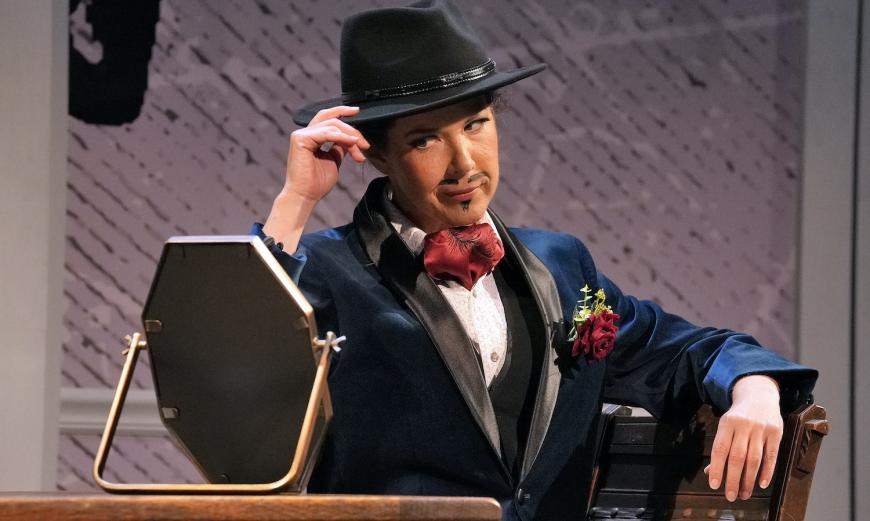
Elizabeth Cree shoots from the gate at the first note and remains a wild ride up until its finish, barely 90 minutes later. The tour-de-force is due in equal parts to librettist Mark Campbell and composer Kevin Puts, whose collaboration results in a seamless web of 29 scenes without pause. West Edge Opera’s production at the Bruns Amphitheater on Friday night capitalized on both the comedy and drama of the piece in a spare production by Sam Helfrich, conducted by Robert Mollicone.
The show’s source is a 1994 novel by English writer Peter Ackroyd, who has also written and researched a number of nonfiction books about historical London. These interests came together in The Trial of Elizabeth Cree (the American title of Dan Leno and the Limehouse Golem), which takes some of the tools of modern fiction writing (nonlinear time, unreliable narrators, multiple points of view) and grafts them onto historical crime fiction. Together with Ackroyd’s detailed knowledge of Victorian London, it adds up to a highly complex story.
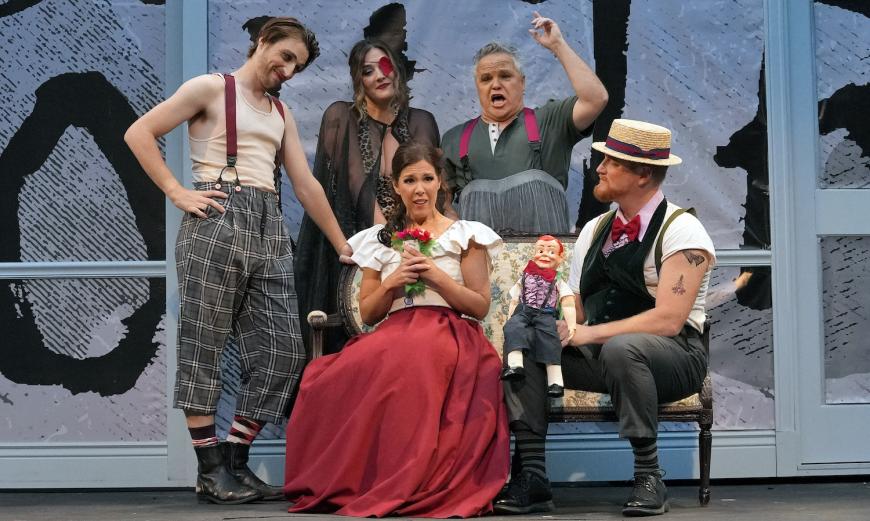
The opera straightens out the timeline in order to make things comprehensible onstage. It follows young Elizabeth Cree’s rise in music hall, which occurs in counterpoint to a series of gruesome murders that bring Jack the Ripper to mind. The police inspector who investigates the murders, Inspector Kildare, is mainly interested in seeing his name in the papers. (The murders occur in 1880, a few months before Sherlock Holmes begins his career as a consulting detective.) Meanwhile, Elizabeth marries John Cree, a mild-mannered newspaperman and would-be playwright, who she is later accused of murdering.
The opera juxtaposes these plots through the first half of the show, but by far the highlight are the scenes in the music hall, featuring an actual star of the period, Dan Leno, a comedian who specialized in character sketches of ordinary folk, and also “dame” roles in pantomime. Though his actual London debut didn’t occur until a few years after the opera’s events, Campbell and Puts give him a hilarious, on-point song where he impersonates Bluebeard’s housekeeper. (Leno actually did do a skit on that subject.) With its echoes of Sondheim, Leno’s song places the opera in a long tradition of musical theater that uses street song and balladry to comment on life in the big city. In this case, we might think first of Sweeney Todd, also set in Victorian London — and Leno’s second number is a slapstick bit in which a husband amputates a bit of his wife each time he comes home from work. Further 20th-century examples would include Threepenny Opera, Rise and Fall of the City of Mahagonny, The Rake’s Progress, and both of Kander and Ebb’s hits, Cabaret and Chicago.
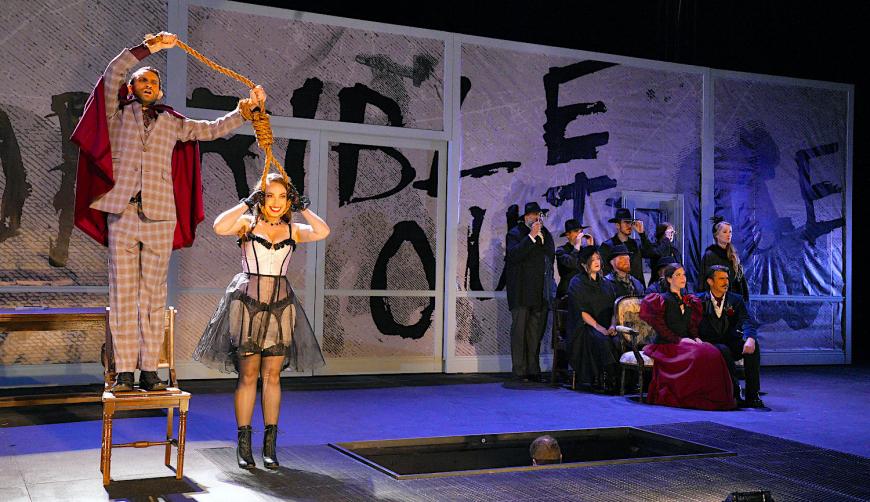
Part of the fun of this show, of course, is watching Campbell and Puts manage the transitions and overlaps between broad musical comedy and sinister murder, between the mockery of Elizabeth’s trial scenes and her inner emotional life. The world is not what it seems, and things slip — most important, the meaning of words slip as a final quintet set in the British Museum’s Reading Room drives home. In the music at this point, Puts channels a little bit of the neoclassical Stravinsky (and in its attention to verbal detail, the libretto really does remind me of Auden and Kallman’s one for Rake’s Progress.) If the opera ends up being partly about culture’s tenuous connection to truth/reality and the elusiveness of words and historical narrative, that’s because those problems are salient in our current world.
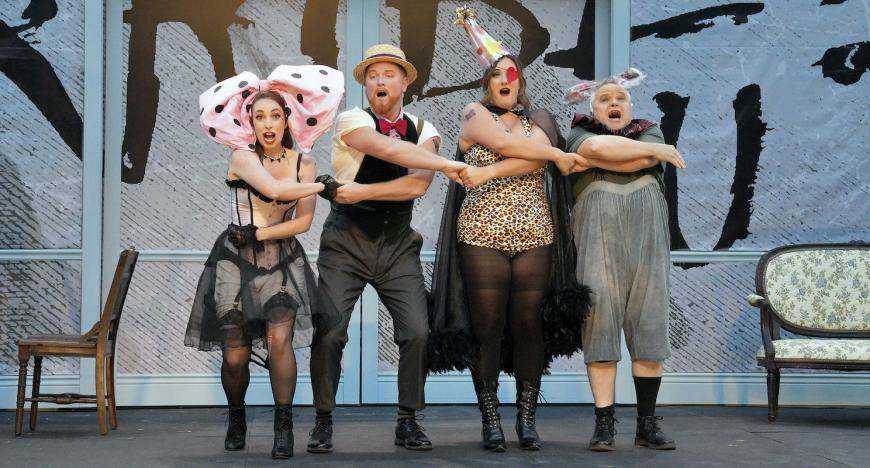
The singers are asked to do a lot, even on the small stage of the Bruns, but West Edge Opera casts on a high level, surprisingly so, if you consider it still a small local company. Elizabeth (Katy Pracht) had to sing off-key and half voice for a few lines of her music hall number — not easy to do convincingly. Samuel Faustine, as Dan Leno, draws on both his music theater training and a more operatic voice. Keith Phares (John Cree) showcases both a commanding baritone and a smaller, more domesticated tone for his character’s timid encounters with Elizabeth. All of them are completely believable and made the tricky acting and vocal changes without apparent difficulty. Simon Barrad was a splendid Inspector and Ashley Dixon represented luxury casting as Doris, one of the members of Leno’s troupe. Yes, she has a voice for big houses, and will soon be a star (knock on wood), but she can do comedy and she moved well. Leslie Katter as Aveline Mortimer was a pleasant discovery for an important, smaller role. In the cozy confines of the Bruns, everybody sounded good and full voice wasn’t always necessary.
In the pit, Mollicone presided over Puts’s lithe chamber orchestra with a fine feeling for pacing and detail, and the seasoned instrumentalists gave a dramatic reading of the score.


